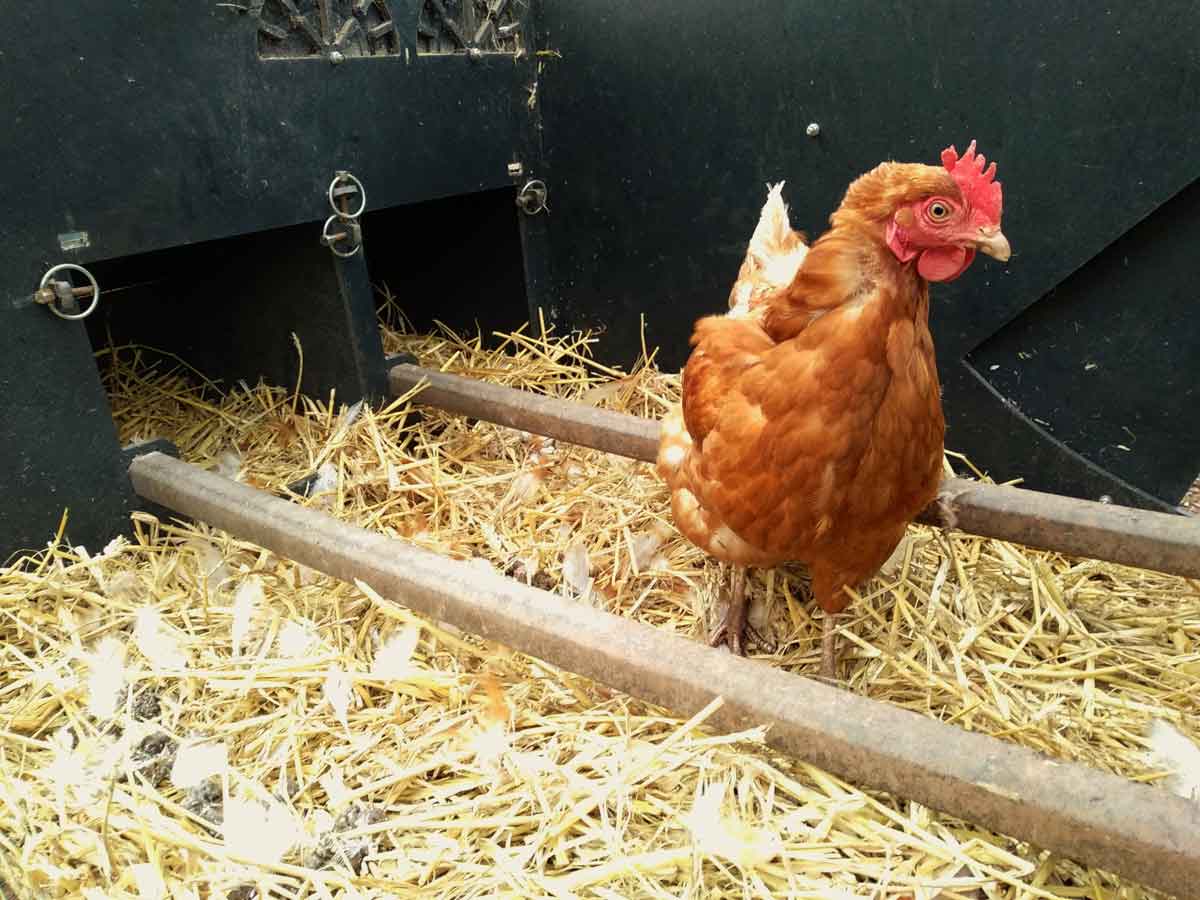Do you love having a backyard coop but hate all the poop scooping?
Looking for a method that can lay that tedious task off your shoulder?
The deep litter method is your answer. Today, I’ll tell you why the deep litter method is the easiest way to maintain your backyard chicken coop. So without further ado, let’s dive in!
What is the Deep Litter Method?
The deep litter method is one of the common techniques to manage the litter found in chicken coops. However, it’s also used with a wide variety of animals, such as pigs. This makes it highly popular among small farms in backyard coop owners.
In this method, you’re using the coop’s floor as a compost pile. Instead of cleaning out the coop from the chickens’ droppings, you provide it with a carbon-based bedding like pine shavings. This bedding will be responsible for composting the wastes on spot.

However, you can use other organic matters from the browns category, keeping in mind that chicken wastes are in the green category.
The main controversy about this method is that it can be quite unhealthy for the chicken if you do it incorrectly. Luckily, it’s fairly simple to pull off and the results will surprise you!
What Makes It Excellent for Your Backyard Chicken Coop?
The method is extremely popular and used in a lot of farms. This gives you an insight into how easy and efficient this method is.
Here are the reasons that make the deep litter method an ideal way to maintain a backyard chicken coop.
Surprisingly Easy to Clean and Maintain
If you like to live the farm life for a little bit every now and then, you don’t necessarily have to love to clean out the chicken poop all the time!
This is exactly what deep litter method is all about. You add the bedding to your coop, keep the compost balance correctly, and good bacteria do the legwork for you!
This takes a few minutes every week. This cuts down on your cleaning and maintenance chores dramatically, as you’re going to clean the coop out once or twice a year. In the majority of the time, the compost will be ready for usage right away.
Adding to how hassle-free this method is, you won’t have to do the aeration as well! Simply scatter some corn throughout the coop.

The chickens’ rummaging and scratching behavior will enhance the airflow of oxygen and help in the aeration process too.
With all the elements of the composting process around, everything is up and ready. You only need to do the very simple job of making sure that everything is working properly.
Help in Boosting the Chickens’ Immunity
The bacteria that work day and night to break down the chicken poop are also an excellent way to boost the health of your chicken!
In addition to decomposing the chicken droppings, these bacteria fight the dangerous bacteria for the same spot. In other words, they help in killing the bacteria that can make your coop in bad shape and health.
There are various claims that these microscopic organisms can protect your chicken from coccidia. These intestinal parasites can be extremely dangerous and lead to the death of your flock.
If you’ve been around coccidia, you’ll know that farmers usually treat it by spraying a diluted ammonia solution. Not only does it kill the bacteria, but it makes for an unfavorable condition for them to live, so they won’t grow again.
The beneficial bacteria also raise the ammonia level slightly higher than normal, making it deadly for the fatal parasite. Your only job will be making sure that these good bacteria are more than the bad ones.
Moreover, by sprinkling some dry corn around, you will satisfy the natural instincts of the chicken to forage and search for their food. This is also good for their activity and health.
Can Help in Managing the Odor
A bad smell occurs in a chicken coop when the nitrogen-rich wastes start giving off ammonia gas. That’s where the deep litter method comes to the rescue!
With the help of the carbon-rich dry bedding, the composting of this manure starts right away. The carbon locks the free nitrogen into odorless compounds, leaving no room for the bad odor to spread.
As long as you provide the coop with dry and fresh bedding, the coop will have an earthy odor. This odor is also your indicator that the composting process is going well.
Deep Litter Method Allows for a Richer Compost
By applying this method properly, you’re achieving a balance that helps the beneficial microbes to thrive. Also, it’ll allow the chicken litter to compost inside the coop.
This compost is an excellent nutritional ground for your backyard garden. That’s two birds one stone!
An Easy Way to Add a Layer of Warmth to the Coop
The temperature of the coop is vital for the health of your chicken. If you live in a cold area, a deep litter coop might provide your chicken with an additional layer of warmth!
The decomposition occurs when the carbon and oxygen from the bedding react with the nitrogenous compounds in the manure. This reaction also produces some heat. This can save you some cash for heating and electricity.
However, you should be aware that this can cause overheating in the warmer months. It’s important to make sure that the temperature and humidity levels inside the coop are kept at optimal levels.
If you find water vapor condensing on your coop’s windows, this indicates that your humidity levels are high.
Having an indoor thermometer with a built-in hygrometer is excellent to keep the humidity levels between 40 and 70%.

How to Apply the Deep Litter Method Correctly?
Now that you know the benefits of the deep litter method, it’s time to learn how to apply it correctly:
- Start by emptying the coop and scrubbing it clean
- Add about 3 to 5 inches of pine shavings
- Every 5 to 7 days, stir up the shavings-dropping mix to speed up the composting process
- Add at least 1 inch of bedding every month
- Neutralize any arising odor by added external compost
- Re-empty and scrub the coop every 6 months for the best results
Wrap Up
With that said, you now know why the deep litter method is the easiest way to maintain your backyard chicken coop.
As you can see, the key to pulling off this method successfully is to make sure that the good bacteria outnumber the bad one.
By following the previous guide properly, you can make sure that your coop will always be odor-free and healthy for your chicken coop.
Don’t forget to give your chickens their favorite treat – mealworms!


